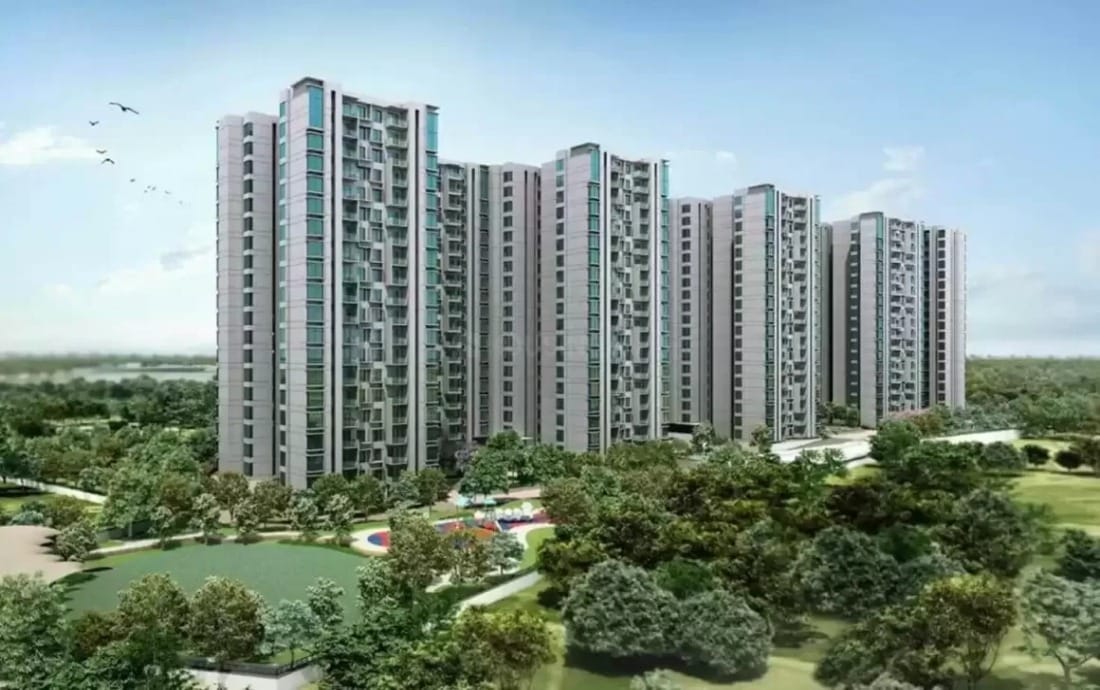
How Do Affordable Housing And Smart Cities Impact Each Other?
Among the several initiatives taken by the Indian government to foster economic and infrastructural development, two deserve a special mention. These are the Pradhan Mantri Awas Yojana (PMAY) and Smart Cities Mission, both of which were launched in 2015. While the first one aims to provide affordable housing for all by 2022, the latter would include 100 cities with smart features and better infrastructure. Considering that a well-developed city needs adequate housing and the real estate sector depends on the regional infrastructure, these two initiatives are essentially interdependent.
Why was PMAY launched?
This scheme was launched to promote the affordable housing segment. However, several reasons led to the need for such a scheme.
India’s urban population is continuously growing in numbers, with more and more people migrating to the well-developed cities. However, affordable homes in Gurgaon aren’t, and this is a significant problem for the financially weaker sections of the population.
Housing certainly forms a part of the basic needs of the people. The economy and the country cannot develop properly if the people’s basic needs aren’t appropriately covered.
From 2011 to 2031, the urban population in India is expected to grow by 59%. Without sufficient housing available, the new urban residents would face severe problems.
The deficit of affordable housing currently stands at 19 million units, is expected to double by 2030 if the situation goes unchecked.
A large section of the Indian population resides in homes unsuitable for living, such as poor conditions and congested spaces.
What does PMAY offer?
PMAY had been launched to help the affordable housing segment on both ends, i.e., the buyers and the sellers. While it makes homes more affordable and therefore easier to buy, the scheme also provides developers with incentives to build such projects.
The initiative aims to develop 20 million homes across India for the lower segments of the population, such as the LIG and EWS. This would undoubtedly help significantly in overcoming the shortage of affordable housing.
The PMAY consists of two parts, one for the urban regions and one for the rural. The urban phase includes developing affordable housing projects in Gurgaon and over 4000 other towns and cities.
Alongside affordability, PMAY also promotes sustainability. The projects covered by this scheme would green spaces, lawns, and gardens that deliver an eco-friendly lifestyle and healthy ambiance.
Unlike many of the affordable housing projects developed in the past, these housing complexes would be loaded with amenities. These include power backup, swimming pool, gymnasium, reliable security, and more.
One of the critical problems in the affordable housing segment’s growth is the unavailability of cheap land in urban areas. However, the projects under PMAY would be built at prime locations to ensure superb connectivity and infrastructure.
Why was the smart cities mission launched?
As the name suggests, this initiative was launched to turn many Indian cities into smart cities. A smart city is a city that has been integrated with various sophisticated infrastructural features. The smart city mission was launched due to several reasons.
With only a few metropolitan cities offering modern infrastructure, the pressure on these cities was rising high. The development of smart cities would deviate from this pressure and distribute it more evenly.
A country as large as India can rely on a few big cities for its economic growth. However, the other towns would require adequate infrastructure before the commercial sectors can develop there.
The development of the best affordable housing in Gurgaon is getting stalled due to the lack of space, which is essentially a result of the city’s saturation. However, with the development of smart cities, the real estate sector would be able to expand.
What features would these smart cities deliver?
Smart cities are being developed to provide a sustainable and healthy lifestyle with adequate amenities even in tier 2 and 3 cities. Under this scheme, several infrastructural developments would be made.
The connectivity infrastructure in these cities would undergo a significant boost. The roads and the pavements would be developed such that they not only ensure seamless connectivity but also offer an uncongested environment.
The governance would be made more citizen-friendly, with various administrative officers lying easily accessible. Digital infrastructure would be heavily improved to allow people to enjoy multiple services online.
The mission also aims to promote sustainability. Smart cities would come with a variety of eco-friendly features. These include the development of various parks, cycling lanes, use of green energy, etc.
How do smart cities and affordable housing projects affect each other?
The infrastructure in a city and the growth of the real estate sector are undoubtedly correlated. While the developers rely on infrastructure to attract buyers, a town would grow correctly only when the citizens’ basic needs are covered.
Providing adequate housing is among the primary objectives of the smart city mission. Under the initiative, affordable housing has been granted the Infrastructure status. This would enable the builders to obtain loans with ease and thereby develop affordable projects.
The smart cities would be undergoing planned development, which would ensure efficient use of land. This would facilitate the growth of affordable housing in Gurgaon Dwarka Expressway and other prime localities as more land would be freed up for the purpose.
Infrastructural development is a vital goal of the smart city mission. Naturally, these improvements would also help the developers greatly. Regions with good civic infrastructure are always the top choices for the builders as they can easily find buyers for their properties.
PMAY includes the development of green amenities in real estate projects. This would help the smart cities mission achieve its goal of sustainable living. As the affordable housing projects are built in the smart cities, they would automatically add to the green cover.
Under PMAY, several loans and tax benefits have been announced for affordable property buyers. This would naturally attract more homebuyers to the smart cities when the projects are developed there and result in the workforce’s growth.
Developers coming up with affordable projects get to enjoy various incentives under PMAY. With more and more builders developing properties in the smart cities, the real estate sector here would grow. This, in turn, would result in the overall economic growth of the cities.
The IT sector is being given a particular emphasis in the smart cities. With the implementation of sophisticated infrastructure, more and more IT companies expand their activities to the new smart cities. The job opportunities they offer facilitate the growth of the real estate sector.
Many investors seek to purchase affordable properties in smart cities. While the homes are currently available at reasonable prices under PMAY, their values would undergo considerable appreciation due to the infrastructural development.
The smart cities and the affordable housing segment are positively affecting each other, fostering each other’s growth. The recent rise in inquiries regarding the best affordable homes in Gurgaon is significant proof of affordable properties’ popularity in smart cities.




